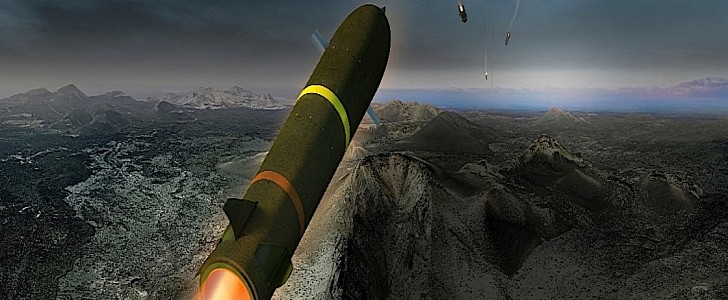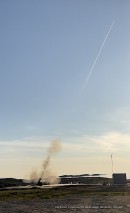Back in 2019, the U.S. Army handed Boeing and Norwegian defense company Nordic Ammunition Company (Nammo) a contract for the development of a ramjet-powered artillery projectile. Called Boeing Ramjet 155 Extended Range Artillery Projectile, the technology was once again put to the test at the Andoya Test Center in Norway.
The first tests took place back in May, when the two companies fired the round in the field. Other similar procedures, including the one announced this week by Boeing, followed in June.
We’re told that on June 28 a ramjet projectile was fired out of a cannon. Its engine (yes, we’re talking about an artillery shell with an engine attached) ignited successfully, the round followed a stable path to its target, and demonstrated a “well-controlled engine combustion process.”
“We have great confidence in the ramjet concept,” said in a statement Nammo Chief Executive Officer Morten Brandtaeg.
“The test – with all aspects from cannon firing, to the projectile body, fins, and trajectory all functioning perfectly – represents a real technological breakthrough in artillery, and a major success for Boeing, Nammo, and the U.S. Army.”
We’re not provided with any details regarding the speed or range achieved during this test, but in theory ramjet devices could easily reach Mach 3 (2,300 mph/3,700 kph), and in some cases even double that.
The official specs of the Ramjet 155 (where 155 stands for caliber) point to it being capable of hitting targets located 40 km (25 miles) away, which is double the range of current rounds. Add to that the extreme speeds it will probably be capable of, and you get almost instantly obliterated targets.
At the time of writing, neither of the companies involved in this project said when a finished product would be presented to the U.S. Army.
We’re told that on June 28 a ramjet projectile was fired out of a cannon. Its engine (yes, we’re talking about an artillery shell with an engine attached) ignited successfully, the round followed a stable path to its target, and demonstrated a “well-controlled engine combustion process.”
“We have great confidence in the ramjet concept,” said in a statement Nammo Chief Executive Officer Morten Brandtaeg.
“The test – with all aspects from cannon firing, to the projectile body, fins, and trajectory all functioning perfectly – represents a real technological breakthrough in artillery, and a major success for Boeing, Nammo, and the U.S. Army.”
We’re not provided with any details regarding the speed or range achieved during this test, but in theory ramjet devices could easily reach Mach 3 (2,300 mph/3,700 kph), and in some cases even double that.
The official specs of the Ramjet 155 (where 155 stands for caliber) point to it being capable of hitting targets located 40 km (25 miles) away, which is double the range of current rounds. Add to that the extreme speeds it will probably be capable of, and you get almost instantly obliterated targets.
At the time of writing, neither of the companies involved in this project said when a finished product would be presented to the U.S. Army.








